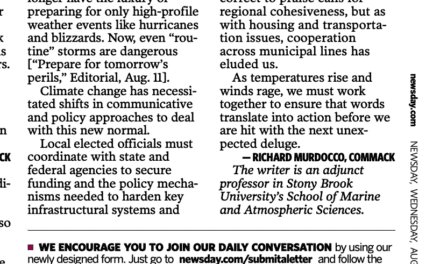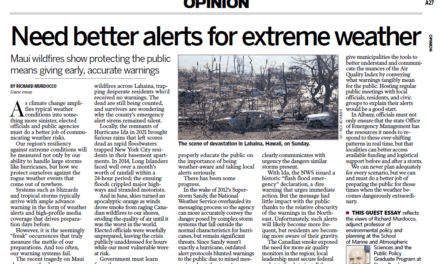It is important for the public to understand the necessity of a sound prescribed burn program for the Pine Barrens region. What follows is a comprehensive look at what prescribed burns are, how they work and why they are necessary:
Prescribed burns are a forestry and management technique that ensures the ecosystems follow their natural reproductive cycles, as well as reduce the intensity of naturally occurring wildfires. According to the University of Idaho, Each prescribed burn has a series of objectives that serve to protect the ecosystem, and protect the public from uncontrollable wildfires:
· Fuel reduction
· Expose mineral soil for seedbeds for regeneration of wind-disseminated species
· Control of insects, diseases, and competing vegetation
· Improvement of natural ecosystems, wildlife habitat, and range forest[1]
The purpose of the prescribed burns vary by region and ecosystem:
Prescribed burns are used most frequently to maintain and restore native grasslands. Prescribed burning can recycle nutrients tied up in old plant growth, control many woody plants and herbaceous weeds, improve poor quality forage, increase plant growth, reduce the risk of large wildfires, and improve certain wildlife habitat. To achieve the above benefits, fire must be used under very specific conditions, using very specific techniques.
Burning is also more cost-effective than other treatments like bulldozing, cutting, or chemicals.[2]
Historically, wildfires were set by Native Americans to promote growth of grasslands:
Native Americans deliberately set fires to clear land for horticulture, to improve access, and to change the composition of the plant community to attract game species. Early settlers set fires to assist in preparing the soil for agriculture and to eliminate stubble from the fields in the fall.[3]
According to the Private Land Partnerships and the Michigan Department of Natural Resources, the timing of the burn, paired with the weather, have a large influence on how successful a prescribed burn is:
The timing of a burn determines the plants which will be benefited and controlled, the impact on wildlife species, and safety. Most burns are conducted mid to late spring, or in the fall. Burning to favor desired grasses should take place just as they are starting to green up, and the soil surface is damp. Generally, a late spring burn will control woody vegetation and cool season grasses better than an early spring burn but are not as beneficial for wildflowers. This burn will also provide warm season grasses with nutrients they need to grow.
Before burning, nesting times of grassland species should always be checked to prevent the destruction of nests and their inhabitants. The best time for spring fires is late March into April; generally in the morning or evening, when the relative humidity and temperature are not changing as rapidly as during daylight hours. The drier the area the earlier the burn should be to avoid damaging the earliest blooming wildflowers. Though fall burns are possible and can be beneficial, they are often avoided, due to the cooler temperatures, drier ground, and destruction to winter wildlife habitat they may cause.
Weather has an overriding effect on a prescribed burn. A burn plan will outline the weather conditions, which must be met before the burn is conducted. It is very important to have the latest and most updated weather conditions available before starting the burn. Relative humidity is an important factor to consider when planning a controlled burn. If the relative humidity is below 50%, the dryness of the grass is prone to causing very hot fires. If the relative humidity is above 70% the fire will have a hard time catching at all. Therefore a relative humidity between 50% and 70% works best.
Temperature is also important when laying out a burn plan because of its relation to relative humidity. Below 32 degrees Fahrenheit grass mats will rarely burn, and above 80 degrees Fahrenheit burning is hazardous. Between 40 degree Fahrenheit and 60 degrees Fahrenheit is ideal.[4]
Most prescribed burns are lit by crews using the drip torch, a hand-carried device that pours out a small stream of burning fuel.[5]
In the Pine Barrens region in particular, prescribed burns are necessary in ensuring the vitality of the ecosystem, and maintaining the pitch pine forest. According to the NYS DEC, very hot, uncontrolled wildfires can negatively impact the Pine Barrens:
Some prescribed burning (controlled fires) needs to be performed to restore the habitat to savannah rather than forest and also to reduce the fuel load that is building up in the brush layers and can lead to catastrophic wildfire. Catastrophic wildfire may convert the pine-oak forest and savannah to predominantly oak forest. This occurs in a very hot fire that kills the trees and seeds, but allows the oaks to regenerate from the stump. Controlled fires remove the litter and control succession, without changing the vegetative community from pine-oak.[6]
Under the current Wildlife Task Force (WTF) Fire Management Plan, prescribed burns are carefully planned by trained staff. The conditions are heavily controlled, and personnel in charge are highly trained:
Each prescribed burn is carried out only under carefully prescribed conditions of wind speed, wind direction, temperature, and humidity. Such burns are carefully planned and timed, with firebreaks prepared ahead of time. All prescribed burns are conducted by a trained and qualified crew, supervised by a prescribed fire incident commander (also referred to as a “burn boss” or “fire leader”) who has additional training and experience in fire management. Volunteer fire departments are not expected to carry the burden or to provide resources including personnel or equipment. However, fire departments should participate in the planning, and in the event of an escape and the prescribed burn being declared a wildfire, the local fire chief could be called upon to serve as Incident Commander.[7]
The above structure of management that controls each prescribed burn highlights how controlled these events are. Historically, fires have occurred to help the ecosystem repopulate, but solid data on frequency of fires in the Pine Barrens region is sparse. In the research I’ve found, it seems that data is hard to find because the frequency of fires in the Pine Barrens depends on a variety of factors, as outlined by the below USDA report:
The dry open conditions and drought prone soils of the pine barrens created conditions favorable for recurrent fires that played a large role in the creation, appearance, and maintenance of the pine barrens community (Radeloff et al. 2000). Fire was frequent throughout the pine barrens, but the fire intensity and return interval varied (Curtis 1959, Vogl 1970, Radeloff et al. 1998). On a given site, the disturbance history determines the composition and structure of the community. Reconstruction of the historic or pre-settlement forest can be a useful tool; however, it is important to note that human activity and climatic change have greatly influenced ecosystems (Landres et al. 1999, Schulte et al. 2001).[8]
Overall, prescribed burns are essential to maintaining the Pine Barrens ecosystem, and protecting the welfare of residents in the region. The DEC should be given greater resources that allow more prescribed burns to occur, over a variety of areas within the Pine Barrens. The longer that the area goes without burning, the more fuel accumulates, which leads to more intense, rapidly spreading fires that are unplanned. Prescribed burns help mitigate against the impacts of wildfire, and help reduce their size and costs to both human life and property.
[1] Geospatial Training and Analysis Cooperative, Prescribed Burns, http://geology.isu.edu/geostac/Field_Exercise/wildfire/prescribedburns.htm
[2] Prescribed Burning , Private Land Partnerships, http://www.michigandnr.com/publications/pdfs/huntingwildlifehabitat/landowners_guide/Habitat_Mgmt/Grassland/Prescribed_Burning.htm
[3] Geospatial Training and Analysis Cooperative, Prescribed Burns, http://geology.isu.edu/geostac/Field_Exercise/wildfire/prescribedburns.htm
[4] Prescribed Burning , Private Land Partnerships, http://www.michigandnr.com/publications/pdfs/huntingwildlifehabitat/landowners_guide/Habitat_Mgmt/Grassland/Prescribed_Burning.htm
[5] US Forest Service, Fire and Aviation Management, Prescribed Burns, http://www.fs.fed.us/fire/fireuse/rxfire/rx_index.html
[6] David A. Sarnoff Pine Barrens Preserve BCA Management Guidance Summary, NYS DEC
[7] Appendix B: Development of a Prescribed Burning Plan, NYS Central Pine Barrens Joint Policy and Planning Commission, http://pb.state.ny.us/cpb_plan/appendix_b.htm
[8] Restoration of the Pine Barrens Ecosystem, Resource Report for the Northwest Sands Project, USDA Matt Bushman, September 2009













